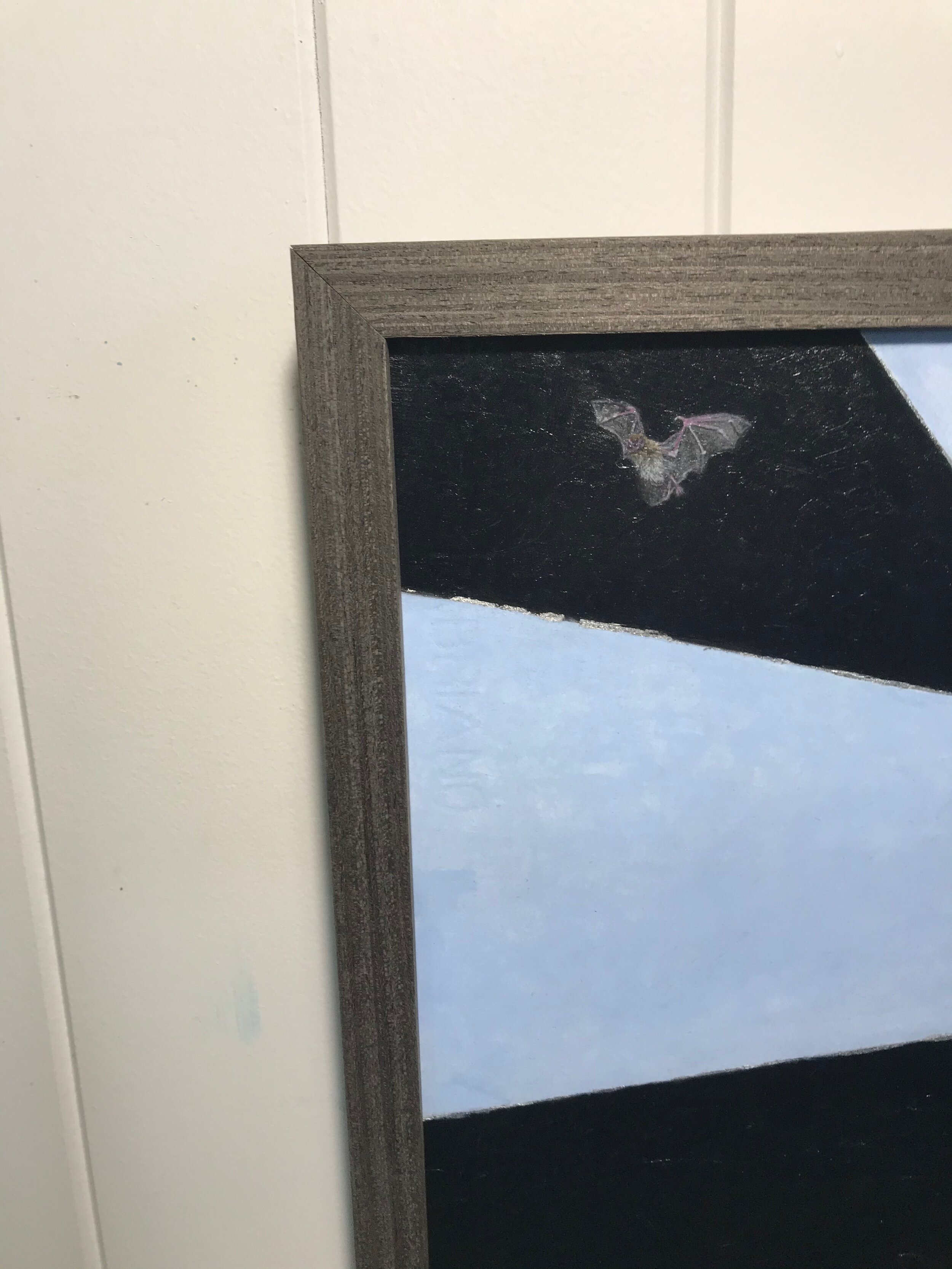Circadian Rhythm
When thinking about the animals that live around us it is easy to forget those that only come out at night. This work looks at the natural lives that happen during the diurnal/ nocturnal cycle.
Our first diurnal bird is an Australian Pelican. Next, we have a nocturnal bird, the Tawny Frogmouth. both of these birds are listed as Least Concern IUCN Redlist.
Then we have the diurnal Regent Honeyeater. They are Critically Endangered on the IUCN Redlist and finally, we have the Chocolate-wattled micro-bat listed as Least Concern IUCN Redlist.
Also featured in this work is a mangrove. I didn’t realise before starting this work that mangroves also have a night and day cycle. With the stems swelling at night and reducing during the day. These fascinating plants are essential for our ecosystems they can live in saltwater, absorb more carbon than trees on the land, provide essential habitat to many species of fish, invertebrates, mammals and fish.
What is today of Least Concern can easily change to endangered in one lifetime if we do not help ecosystems to survive?
This work in watercolour pencil and oil paint is a striking work that will draw conversation. Measuring 75cm across by 50cm high and framed in a simple frame timber frame you can have this hang on your wall the same day it arrives.
When thinking about the animals that live around us it is easy to forget those that only come out at night. This work looks at the natural lives that happen during the diurnal/ nocturnal cycle.
Our first diurnal bird is an Australian Pelican. Next, we have a nocturnal bird, the Tawny Frogmouth. both of these birds are listed as Least Concern IUCN Redlist.
Then we have the diurnal Regent Honeyeater. They are Critically Endangered on the IUCN Redlist and finally, we have the Chocolate-wattled micro-bat listed as Least Concern IUCN Redlist.
Also featured in this work is a mangrove. I didn’t realise before starting this work that mangroves also have a night and day cycle. With the stems swelling at night and reducing during the day. These fascinating plants are essential for our ecosystems they can live in saltwater, absorb more carbon than trees on the land, provide essential habitat to many species of fish, invertebrates, mammals and fish.
What is today of Least Concern can easily change to endangered in one lifetime if we do not help ecosystems to survive?
This work in watercolour pencil and oil paint is a striking work that will draw conversation. Measuring 75cm across by 50cm high and framed in a simple frame timber frame you can have this hang on your wall the same day it arrives.
When thinking about the animals that live around us it is easy to forget those that only come out at night. This work looks at the natural lives that happen during the diurnal/ nocturnal cycle.
Our first diurnal bird is an Australian Pelican. Next, we have a nocturnal bird, the Tawny Frogmouth. both of these birds are listed as Least Concern IUCN Redlist.
Then we have the diurnal Regent Honeyeater. They are Critically Endangered on the IUCN Redlist and finally, we have the Chocolate-wattled micro-bat listed as Least Concern IUCN Redlist.
Also featured in this work is a mangrove. I didn’t realise before starting this work that mangroves also have a night and day cycle. With the stems swelling at night and reducing during the day. These fascinating plants are essential for our ecosystems they can live in saltwater, absorb more carbon than trees on the land, provide essential habitat to many species of fish, invertebrates, mammals and fish.
What is today of Least Concern can easily change to endangered in one lifetime if we do not help ecosystems to survive?
This work in watercolour pencil and oil paint is a striking work that will draw conversation. Measuring 75cm across by 50cm high and framed in a simple frame timber frame you can have this hang on your wall the same day it arrives.







